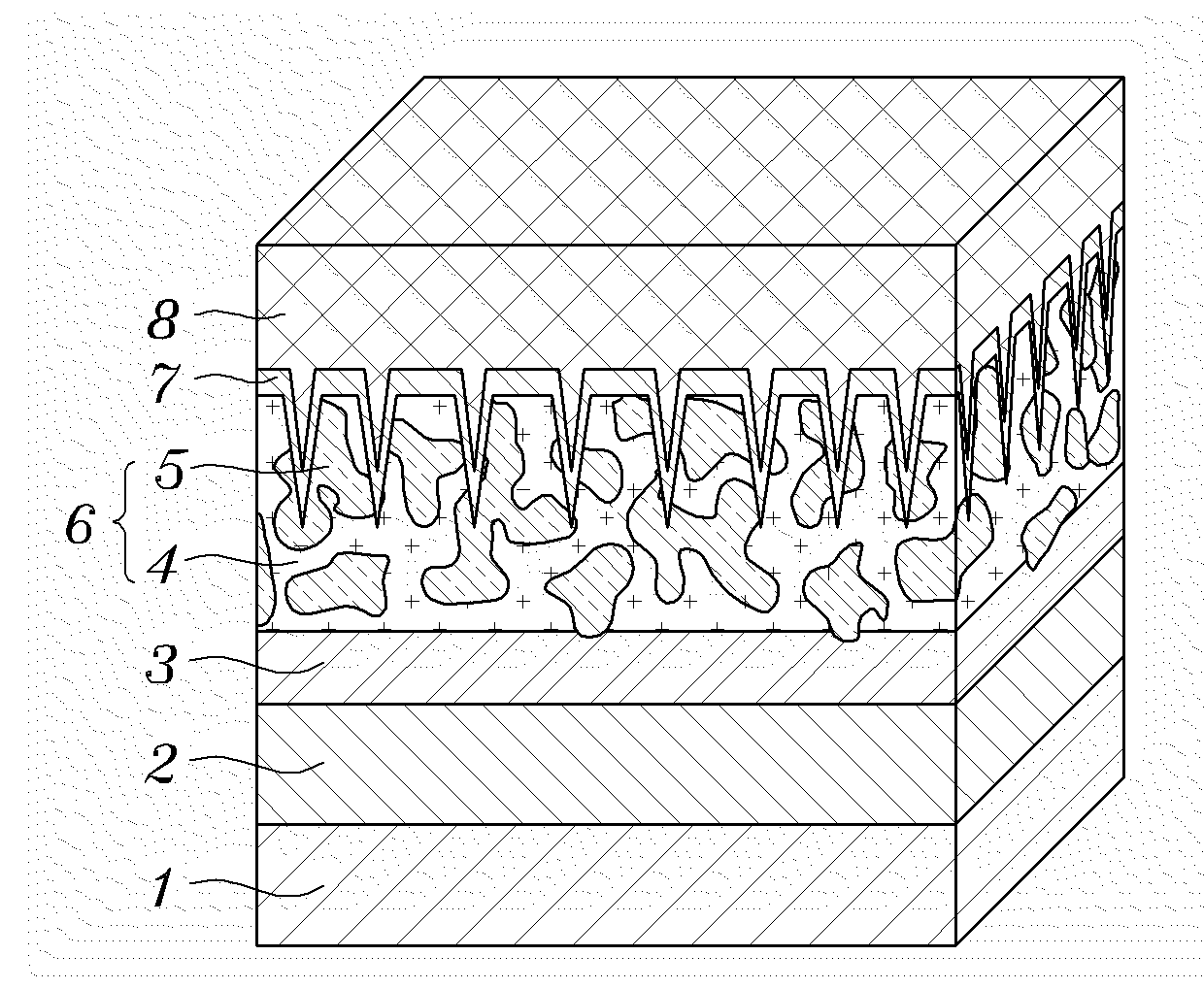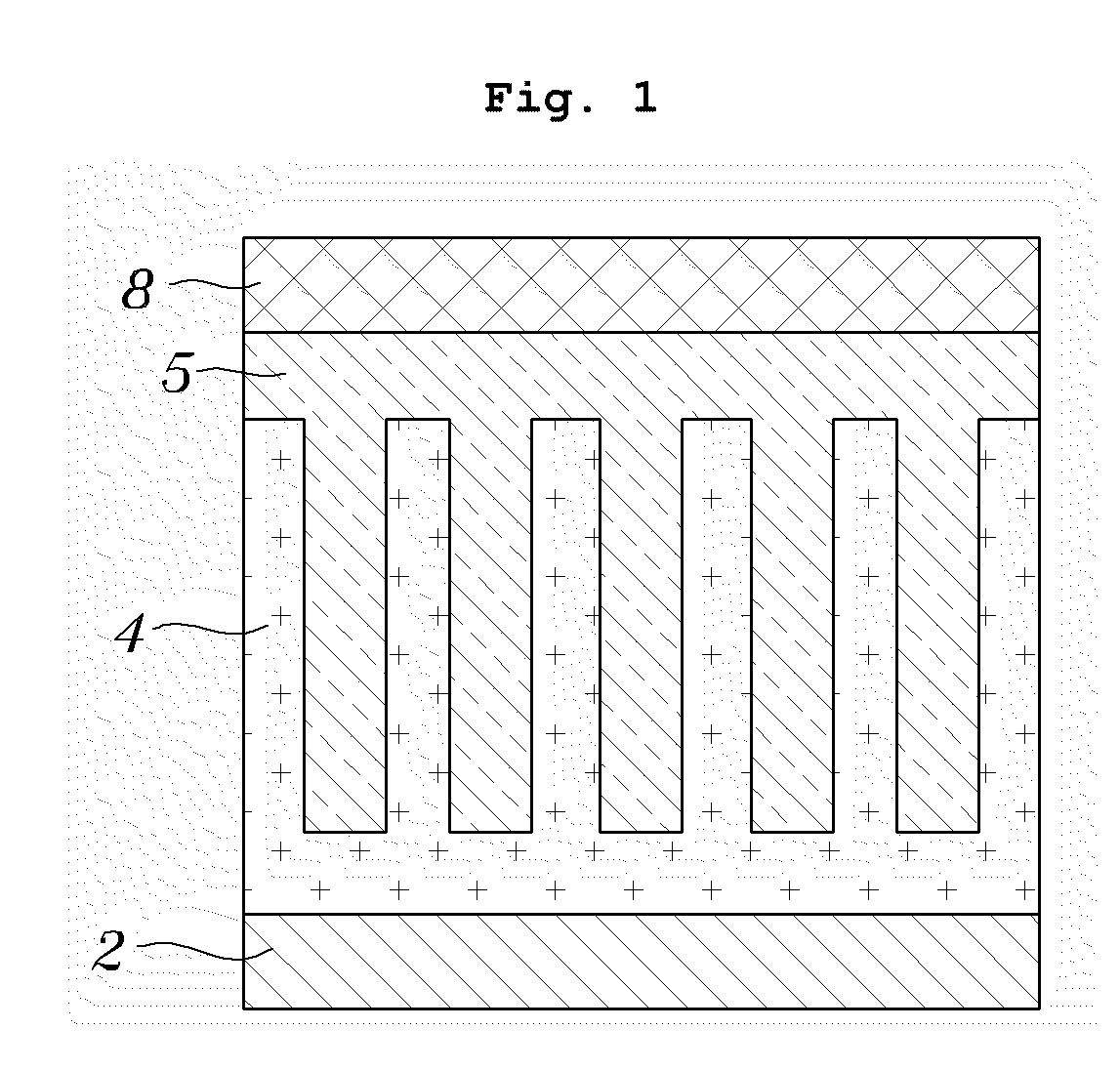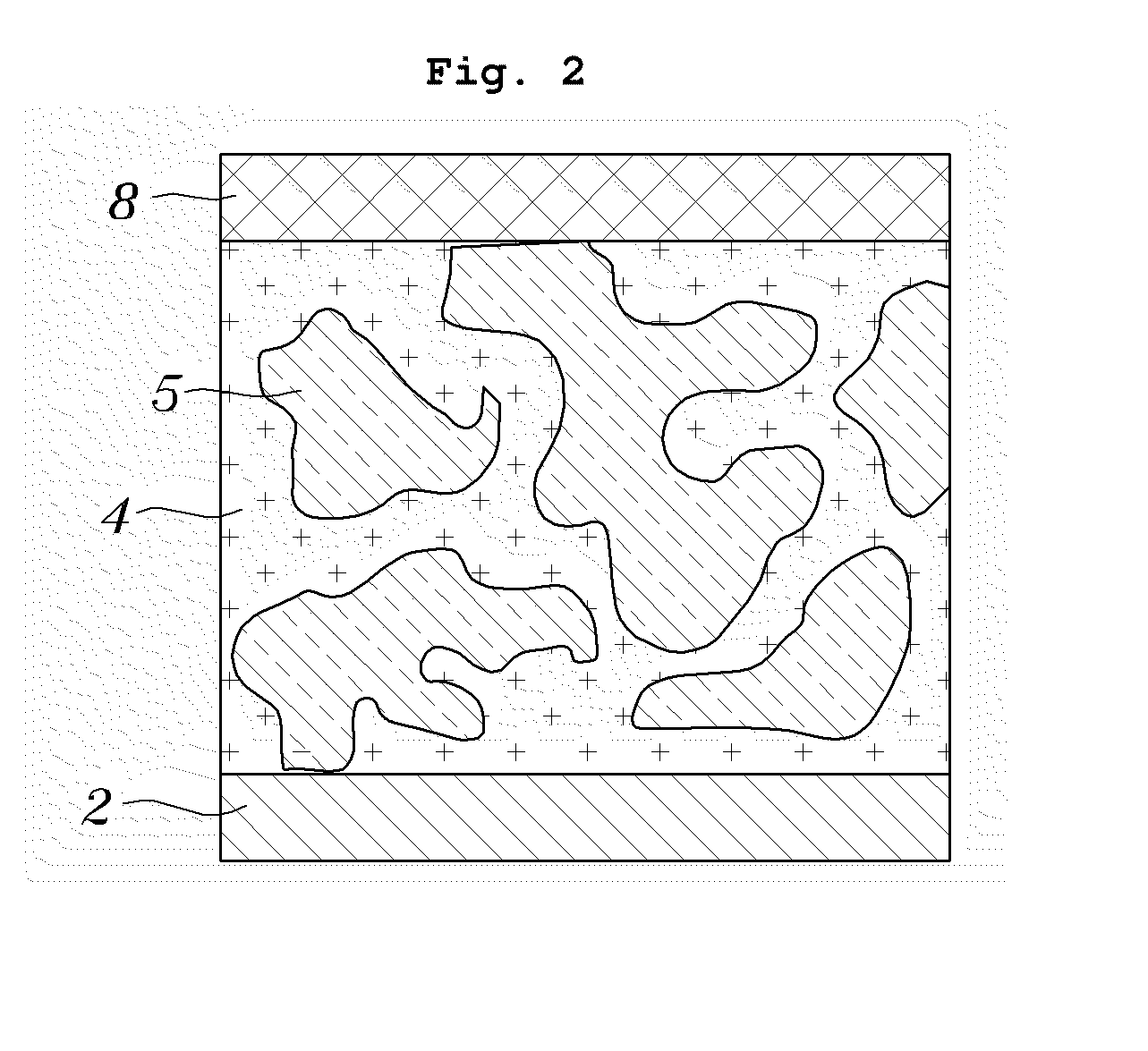Organic solar cells and method of manufacturing the same
a solar cell and organic technology, applied in the field of organic solar cells, can solve the problems of inability to artificially manufacture inability to obtain such an ideal structure, and difficulty in manufacturing an ideal electron donor/acceptor structure, etc., and achieve the effect of increasing electrons
- Summary
- Abstract
- Description
- Claims
- Application Information
AI Technical Summary
Benefits of technology
Problems solved by technology
Method used
Image
Examples
example 1
Manufacturing of Organic Solar Cell Using Nanoimprinting After Drying of Photoactive Layer
[0053]1-1: Formation of Hole Transfer Layer
[0054]A glass substrate coated with ITO was washed with acetone and alcohol using a sonicator, and then subjected to plasma treatment using an oxygen plasma generator (PDC-32G, available from Harrick Plasma) in an oxygen atmosphere to thus remove organics from the surface thereof. A hydroxyl group was formed on the surface of ITO, so that the ITO surface was made hydrophilic. Subsequently, poly(3,4-ethylenedioxythiophene)-polystyrenesulfonate (available from Bayer) was applied on the hydrophilic surface of ITO through spin coating and then dried at 140° C., thus completely removing the solvent, thereby forming a hole transfer layer on the glass substrate.
[0055]1-2: Formation of Photoactive layer
[0056]30 mg of an electron donor material, for example, poly-3-hexylthiophene (P3HT) and 21 mg of an electron acceptor material, for example, PCBM were dissolve...
example 2
Manufacturing of Organic Solar Cell Using Nanoimprinting before Drying of Photoactive Layer
[0061]An organic solar cell was manufactured in the same manner as in Example 1, with the exception that, in Example 1-2, the mixture of the photoactive layer applied on the hole transfer layer was not dried, and the solvent of the mixture was dried in a state in which the mold was placed on the mixture of the photoactive layer directly after application of the mixture.
experimental example 1
Comparison of Characteristics of Solar Cells
[0064]The current-voltage characteristics of the organic solar cells manufactured in Examples 1 and 2 and Comparative Examples 1 and 2 were compared using a solar simulator (66984 available from Newport). As the solar simulator, a 300 W xenon lamp (6258 available from Newport) and an AM1.5G filter (81088A available from Newport) were used, and the intensity of light was set to 100 mW / cm2.
[0065]As is apparent from the results shown in Table 1 and FIG. 7, the organic solar cells of Examples 1 and 2 had very high short-circuit current compared to the organic solar cells of Comparative Examples 1 and 2. Further, in the evaluation of the effect of the thermal treatment for making the photoactive layer flexible during the nanoimprinting process of Example 1 on improvement of the short-circuit current, because the solar cell of Comparative Example 2 which was thermally treated at 150° C. for 2 min without the use of the mold had no power conversi...
PUM
| Property | Measurement | Unit |
|---|---|---|
| Length | aaaaa | aaaaa |
| Force | aaaaa | aaaaa |
| Electrical conductivity | aaaaa | aaaaa |
Abstract
Description
Claims
Application Information
 Login to View More
Login to View More - R&D
- Intellectual Property
- Life Sciences
- Materials
- Tech Scout
- Unparalleled Data Quality
- Higher Quality Content
- 60% Fewer Hallucinations
Browse by: Latest US Patents, China's latest patents, Technical Efficacy Thesaurus, Application Domain, Technology Topic, Popular Technical Reports.
© 2025 PatSnap. All rights reserved.Legal|Privacy policy|Modern Slavery Act Transparency Statement|Sitemap|About US| Contact US: help@patsnap.com



